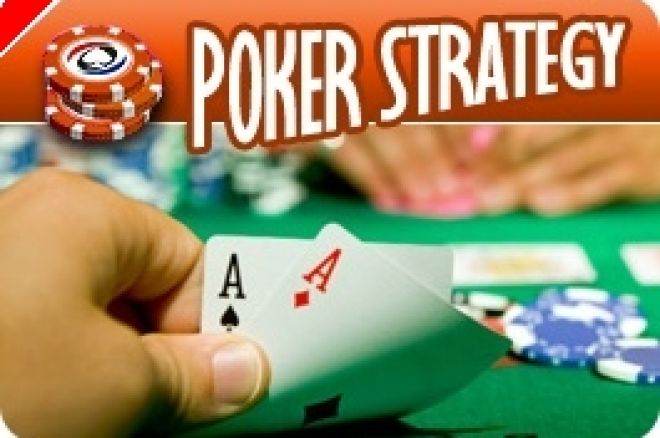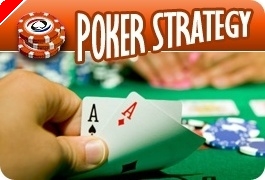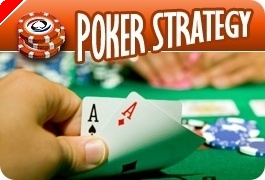Stud Poker Strategy: Multi-way Hands, Part 3

The strategy for multi-way stud games on fifth street and beyond varies significantly from heads-up play. There is a new dimension introduced �C the importance of getting the pot heads-up. Let me explain.
In a heads-up affair, you are chiefly concerned with two possibilities. You are in the lead and want to make it more expensive for your opponent to continue to draw, or you are behind and want to draw for as cheaply as possible. Sometimes, not as commonly, you are focused on deception. Either you are trying to figure out if your opponent is as strong as he is representing �C and therefore thinking about the cost of finding out. Or you are trying to deceive your opponent into folding or calling by representing that you are stronger or weaker than you really are.
In any case, your decisions are exactly bilateral; your wins are your opponent's losses. Your correct decisions hurt him and your wrong decisions help him. It is, generally speaking, a simple equation.
But when hands are multi-way, the calculus changes significantly. Having a hand better than the bettor may not mean you are in the lead. A bet that gets an opponent to fold may not be a sufficient bet to win the pot.
There are other differences as well. In a heads-up game, if you call, the betting stops. It's that simple. But in a multi-way game, your call may well not end the action. Similarly, in a heads-up hand, if you raise and your betting opponent folds, you win the pot. But in a multi-way hand, if you raise and the bettor folds, you may still lose the hand.
This makes strategic decisions, at least in some ways, more complex.
Consider the following hand on sixth street. You have aces up, with a pair of jacks exposed. You also have a draw to an A-J flush. jacks and aces are live. There's a guy with a paired door card king on your right. A king has been folded, but he's a tight player and you figure he may well have trip kings. If it were heads up and he bet you'd surely call him down to the river.
But in this example, there's a third player to your left who has just hit his third exposed heart. You're not sure if he's on a flush draw or already has a flush. If it's a flush then you figure it's Q-high, since he's showing a queen of that suit and you have two aces and the other player is showing two kings. If he hits his flush and you hit yours you figure to be in the lead. If he already has a flush you're obviously behind with only your aces up.
Though it would make sense to draw to your flush or full house on sixth street in a heads-up game against a player who seems to have trips, it would almost surely be a mistake to do so in this game, with the third player then almost certainly calling behind you, also drawing for a winning hand.
The better play, taking into consideration that third player and all the money he has put in the pot, thus enriching it, is to raise. Make it expensive for the third player to hit his draw �C if that's what he's doing. If he's already made the flush, you still have outs, since you're drawing to a higher flush or full house.
By raising and possibily knocking out the third player, you're giving yourself a shot at vastly increasing the percentage of times that you'll win the engorged pot. Take a look at the way the hand is likely to play out to understand this better.
If your opponent on your right, who likely has three kings, bets and you call, you are surely giving the player with a flush draw an incentive to call along. But if you raise you may get him to fold, figuring that you may be full or have a higher flush than he is drawing to. Or he might just imagine that it's not worth two bets to draw his hand on the river.
But even if he does call, you'll almost surely win if you hit your hand.
Here's another example. You are on fifth street. You have an ace exposed and your opponent on your left just hit an exposed low pair �C by pairing his fourth-street card, not his door card. He probably has two pair. He bets, as the high hand showing, likely figuring he has the best hand. You have a split middle pair and just hit an ace kicker. The player after you is on a flush draw. You want to raise here to drive him out so you can get heads up with the guy with two pair. You'd like to play your hand against his, since a medium pair with an ace kicker is only a very small underdog to two small pair. You don't want to play a draw to aces up against two opponents �C one of whom is going for a flush �C as your winning percentage goes way down. If you call, you'll encourage a call from the drawing hand. But a raise, especially on fifth street, may make the hand too expensive for your drawing opponent to play. So he may well fold, which is what you'd like.
You can sometimes knock out the best hand and play against the player who is drawing with an inferior hand to yours. That's good, too. Imagine that the opponent on your left is a very tight player. You pair your door card. You know that he is going to think you have trips if you bet, so you bet with that intention. You also know that the player to your right, with what appears to be a flush draw, rarely folds until he knows he's beaten. You know he'll call. If it were heads up against him you'd check and hope that he'd check behind you. But with the third player in, you're hoping that by betting into a three-way pot you'll get him to fold.
The bottom line with multi-way pots is that they require a different strategy than playing heads up. They require that you think through the likely consequences of your betting action, deviating as necessary from the betting action you would normally make in a more conventional heads-up hand.
Can you think of any specific multi-way situations you've been in? I'd be interested in hearing from you. Perhaps I'll use your situation in a future column. Let me know.








